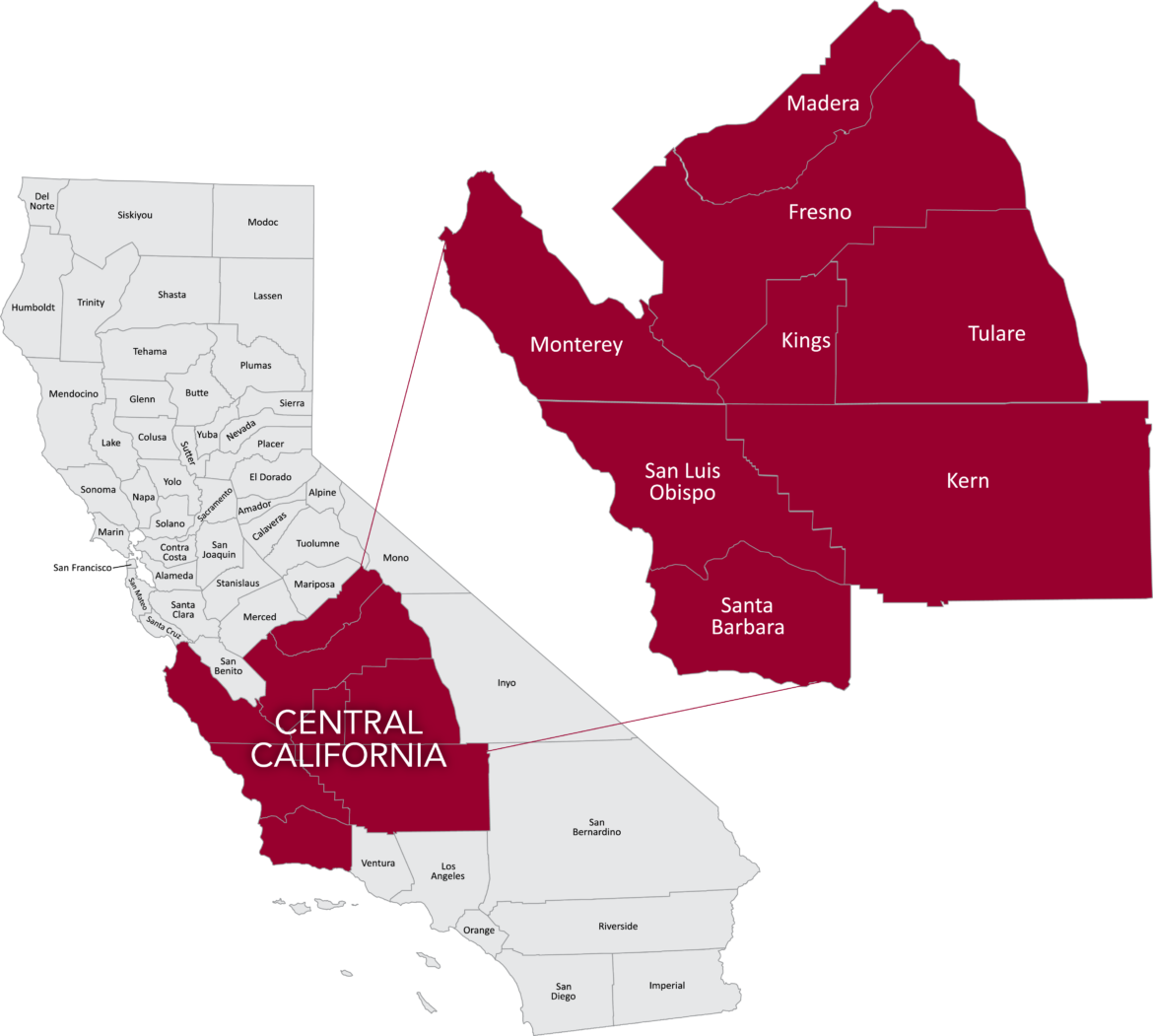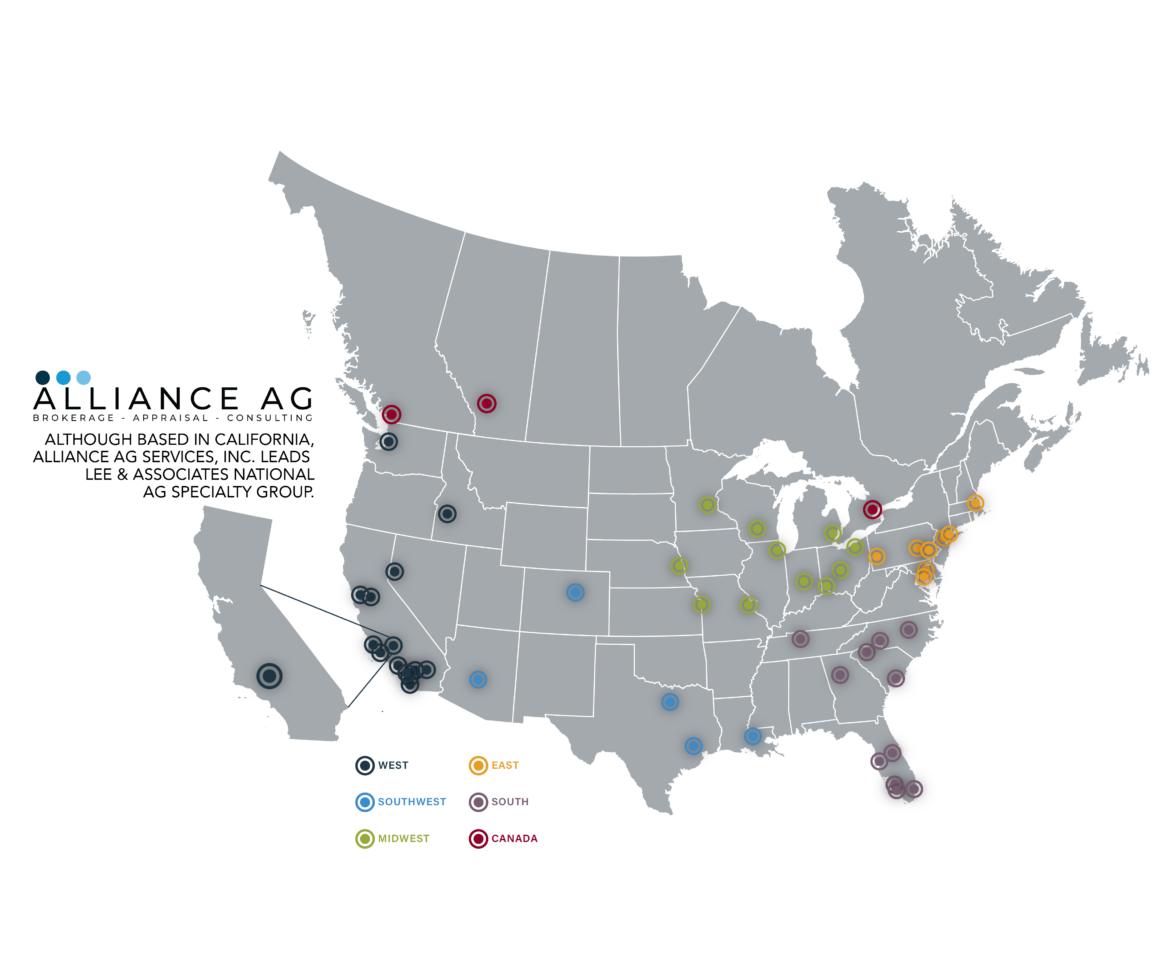-
LEE & ASSOCIATES OF CENTRAL CALIFORNIA
FOCUSED ON CONNECTIONSin a world dominated by transactions.
Local Expertise. International Reach. World Class.
Lee & Associates Central California
Lee & Associates Central California is a full-service commercial real estate firm specializing in industrial, agricultural land, office, and investment brokerage within Kern, Monterey, San Luis Obispo, Santa Barbara, Madera, Kings, Fresno and Tulare Counties. Our company is built on a broker-owned platform that encourages cooperation and collaboration that optimizes results for all of our clients. Lee & Associates is known for its commitment to providing superior market intelligence and professional service from true experts in commercial real estate. As business owners ourselves, we understand the value of working with experienced professionals who are tops in their field, and we are committed to helping you make real estate decisions that will make your company thrive.
$115B
Transaction Volume Over 5 Years
1979
Year Founded
1,600+
Professionals
75+
Office Locations


Lee & Associates of Central California
COMMERCIAL REAL ESTATE SERVICES
Our full-service brokerage firm specializes in meeting the commercial real estate needs within Kern, Monterey, San Luis Obispo, Santa Barbara, Madera, Kings, Fresno and Tulare Counties. This includes retail, office, industrial, land, multi-family and offices, and investment properties.
Our dedicated team of brokers provide customized solutions that enhance value, enabling clients to make informed decisions. We prioritize excellence through personalized service, ensuring each client receives the attention and expertise they require. With a comprehensive understanding of local market trends and a vast network of industry connections, we are well-equipped to navigate real estate transactions seamlessly.
Whether you seek to lease a prime retail space, invest in a vineyard, or expand industrial operations, our experienced professionals are ready to support you at every stage.
Lee & Associates - Alliance Ag Services
AGRICULTURAL SERVICES
Established in 2002, Alliance Ag Services, Inc. became the pioneering full-service brokerage and consulting firm in the southern San Joaquin Valley of California. Since then, our service territory has notably grown and now partnered with Global Commercial Real Estate firm, Lee & Associates, as of 2023.
Our staff consists of a licensed Broker, Broker Associates, licensed Agents, consulting associates, licensed agricultural appraisers, and research associates.
Our team members, who are geographically located throughout our service regions, are highly knowledgeable and experienced in the diverse agricultural industries, renewable energy, and water banking.
The Lee Story
In 1979, Bill Lee opened a commercial real estate office in Orange County, CA. Since then, the organization has expanded to over 75 offices throughout North America. Lee & Associates is unique in that we are privately-owned by our Brokers and are the Largest Broker-Owned Commercial Real Estate Firm in North America. With that ownership comes investing funds in other offices, meaning we are literally invested in each other’s success. Lee & Associates partners on a national level with SIOR Global, CCIM Institute, CREW Network, IAMC, and NAIOP. Lee & Associates is home to the 5th largest number of SIOR members in the world and is ranked in the top 10 CCIM designee companies in North America. In 2020, our 501C-3 charitable organization, CompassionateLEE, earned us national recognition for the “Best Corporate Social Responsibility Program.”
OUR SERVICES
FEATURED PROPERTIES
LET OUR EXPERTS ASSIST YOU
If you are ready to get started on your next transaction or just need information to help plan your next move, connect with a Lee & Associates Central California professional for up-to-date market insight.






